
Non-destructive testing is a detection technology that has emerged and developed based on modern science. It utilizes advanced techniques and instruments to conduct highly sensitive and reliable examinations and tests of the internal and surface structures, properties, and states of the objects being tested. Without causing damage or altering the physical and chemical states of the objects, non-destructive testing is employed to assess their continuity, integrity, safety, and other performance indicators. As an effective means of inspection, non-destructive testing is widely used worldwide in various fields of economic development. This includes the manufacturing and in-service inspection of special equipment, as well as applications in industries such as mechanical engineering, metallurgy, petroleum and natural gas, chemical engineering, aerospace, shipping, railways, electricity, nuclear industry, weapons, coal, non-ferrous metals, construction, and more. Particularly in ensuring the quality and safety of pressure equipment products, non-destructive testing technology plays a crucial role.
Non-destructive testing employs physical or chemical methods, utilizing modern technology and equipment, to examine and test the internal and surface structures, states, and types, quantities, shapes, properties, positions, sizes, distributions, and variations of defects in specimens. Through non-destructive testing, a comprehensive examination can be conducted on the rationality of design, correctness of material selection, feasibility and accuracy of manufacturing and installation process schemes, and the authenticity of quality. This method effectively ensures the quality of products, equipment, and engineering by providing insights into various aspects.
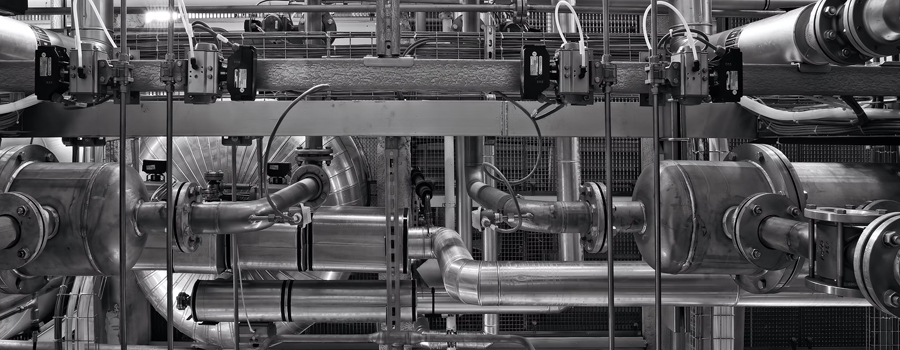
NOA's services cover the entire supply chain process:
| 1. Supplier assessment and auditing | 2. Inspection at various stages of manufacturing and installation |
| 3. Technical consulting during the manufacturing and installation processes | 4. Other customized non-destructive testing services |
Ultrasonic testing is a non-destructive testing method used to inspect internal defects in metal components using ultrasonic waves. An acoustic transducer emits ultrasonic waves to the surface of the component through a coupling agent. As the ultrasonic waves propagate inside the component, they encounter different interfaces, resulting in different reflected signals (echoes). By analyzing the time difference between various reflected signals reaching the transducer, internal defects within the component can be detected.
The height and position of the displayed echo signals on a fluorescent screen can be used to determine the size, location, and approximate nature of the defects. Ultrasonic testing is sensitive to cracks, incomplete welds, and lack of fusion defects but less sensitive to porosity and inclusion. It has lower visual intuitiveness and is less sensitive to near-surface defects (referred to as the blind zone of ultrasonic waves).
Ultrasonic Testing Services provided by NOA (including but not limited to):
| 1. Longitudinal wave testing | 2. Shear wave testing |
| 3. Surface wave testing | 4. Guided wave testing |
| 5. Creep wave testing | 6. Reflection ultrasonic testing |
| 7. Transmission ultrasonic testing | 8. Liquid immersion ultrasonic testing |
There is no fundamental difference between X-rays and natural light; both are forms of electromagnetic waves. The key distinction lies in the fact that the energy of X-ray photons is much greater than that of visible light. X-rays can penetrate objects that visible light cannot, and during this penetration, they undergo complex physical and chemical interactions with the material. This includes ionizing atoms, causing certain substances to fluoresce, and even inducing photochemical reactions in some materials.
Radiographic Testing Services Provided by NOA (including but not limited to):
| 1.Film Radiography Testing - Conventional RT | 2.Digital Imaging Testing - DR |
| 3.X-ray Testing | 4.Gamma-ray Testing |
| 5.High-Energy Radiography Testing - Particle Accelerator | 6.Real-time Imaging Testing with X-ray Image Conduction Camera |
Magnetic Particle Testing is a method of observing defects using magnetic particles as a display medium. The testing method is categorized into wet and dry methods based on the type of magnetic particle medium applied during magnetization. Additionally, the inspection methods are classified into continuous and residual magnetism methods based on when magnetic particles are applied to the specimen.
In the case of ferromagnetic material specimens, after magnetization, the presence of discontinuities causes local distortions in the magnetic field on the surface and near-surface of the specimen, resulting in a leakage magnetic field. Magnetic particles applied to the surface of the specimen adhere to these areas of leakage magnetic field. Under appropriate illumination, visible magnetic patterns are formed, revealing the position, size, shape, and severity of the discontinuities. This method is also known as magnetic particle inspection or magnetic particle flaw detection and is one of the five conventional methods of non-destructive testing.
Magnetic Particle Testing Services by NOA (including but not limited to):
| 1. Continuous Method Magnetic Particle Testing | 2. Residual Magnetism Method Magnetic Particle Testing |
| 3. Fluorescent Magnetic Particle Testing | 4. Magnetic Yoke Method Magnetic Particle Testing |
| 5. Electromagnetic Method Magnetic Particle Testing | 6. Central Conductor Method Magnetic Particle Testing |
| 7. Coil Method Magnetic Particle Testing | 8. Contact Method Magnetic Particle Testing |
Penetrant Testing is based on the capillary action (or capillary phenomenon) of liquids and the luminescence phenomenon of solid dyes under certain conditions. The working principle of penetrant testing is as follows: the surface of the component is coated with a penetrant containing fluorescent or colored dyes. Through capillary action over a certain period, the penetrant can penetrate into surface-open defects. After removing excess penetrant from the component's surface and allowing it to dry, an adsorptive medium, known as the developer, is applied to the component's surface. Again, through capillary action, the developer attracts the penetrant from the defects, causing the penetrant to migrate into the developer.
Under specific lighting conditions (black light or white light), the traces of the penetrant at the defect locations are displayed (yellow-green fluorescence or bright red color). This process allows for the detection of the morphology and distribution status of defects.
Penetrant Testing Services provided by NOA (including but not limited to):
| 1. Color Contrast Penetrant Testing | 2. Fluorescent Penetrant Testing |
| 3. Water Washable Penetrant Testing | 4. Solvent Removable Penetrant Testing |
Time Of Flight Diffraction (TOFD) ultrasonic testing is a method for detecting, quantifying, and locating defects by relying on the diffraction energy obtained from the "end corner" and "end point" of the internal structure of the test piece, primarily referring to defects. TOFD technology uses two broadband narrow-pulse probes, one for transmission and the other for reception, symmetrically arranged relative to the centerline of the weld. The transmitting probe generates a non-focused longitudinal wave beam at a certain angle, which penetrates into the tested object. Some of the beams propagate along the near surface and are received by the receiving probe, while others are received by the probe after reflecting off the bottom surface. The receiving probe determines the position and height of the defect by receiving the diffraction signal and its time delay from the tip of the defect.
TOFD Testing Services provided by NOA (including but not limited to):
| 1. Pressure Vessel Weld Inspection | 2. Pressure Pipeline Weld Inspection |
| 3. Steel Structure Weld Inspection | 4. Raw Material Inspection |
Phased Array Ultrasonic Testing (PAUT) technology uses multi-element transducers with different shapes to generate and receive ultrasonic beams. By controlling the different delay times of pulses emitted (or received) by each element in the transducer array, the phase relationship of the sound wave when it reaches (or comes from) a specific point inside an object is altered. This manipulation achieves changes in the focus and direction of the sound beam, enabling ultrasonic beam scanning, deflection, and focusing.
A combination of mechanical and electronic scanning methods is then used to create images. A phased array consists of an assembly of piezoelectric crystals arranged in a specific pattern. These crystals are sequentially excited at predetermined delay times, forming a collective wavefront. This arrangement effectively controls the shape and direction of the emitted ultrasonic beam (wavefront), allowing for ultrasonic beam scanning, deflection, and focusing. PAUT provides a greater capability than single or multiple probe systems for determining the shape, size, and orientation of discontinuities.
Phased Array Ultrasonic Testing (PAUT) Services provided by NOA (including but not limited to):
| 1. Pressure Vessel Weld Inspection | 2. Pressure Pipeline Weld Inspection |
| 3. Steel Structure Weld Inspection | 4. Raw Material Inspection |
| 5. High-Strength Bolt Inspection | 6. Variable Diameter Shaft Inspection |
| 7. Inspection of Irregularly Shaped Structural Components |
1. Customer presents specific requirements.
2. Professional personnel coordinate.
3. Develop a professional testing plan.
4. Clarify or address questions regarding the technical plan.
5. Quotation.
6. Sign a technical service contract.
7. Project execution.
8. Project conclusion and summary.
What preparations are needed before conventional non-destructive testing?
(1) Familiar with regulations, specifications, standards, contracts, and other relevant documentation related to the object being tested.
(2) Familiar with drawings and relevant technical conditions of the object being tested.
(3) Familiar with the main processes such as processing, welding, inspection, testing, non-destructive testing, etc., and the corresponding standards for the object being tested.
(4) Familiar with the quality assurance outline, production outline, and corresponding procedures for the object being tested.
(5) Develop or be familiar with the management and execution procedures related to the object being tested.
What does the general document review process include in non-destructive testing?
Reviewing various documents related to the object being tested. This includes manufacturing production plans and process plans; identification certificates and test reports for new technologies, new materials, and new processes to be used; inspection plans and requirements for equipment manufacturing, calibration certificates for testing equipment and instruments; production process equipment, operating procedures, and qualifications of relevant production personnel for major and critical parts; quality certification documents and inspection reports for raw materials, purchased components, components, standard parts, and blanks used in equipment manufacturing; and inspecting the quality acceptance reports of externally purchased components, outsourced processed parts, and materials by the equipment manufacturing unit.
What does the general acceptance of non-destructive testing typically include?
Acceptance involves a comprehensive final inspection, testing, and verification of manufacturing quality and deliverable documents in accordance with contract and specification requirements.
It mainly includes:
(1) Implementing the testing of the object being tested and assessing relevant data according to the acceptance standards and terms specified in the contract and technical requirements.
(2) Document acceptance, checking and reviewing deliverable documents according to contract and acceptance procedures, and verifying their compliance.
What are the testing tasks for the laboratory and on-site work?
According to the contract requirements, ensure the handover with the client, count, inspect, test, evaluate, and transfer. The testing team should carefully test and evaluate the testing objects according to quality acceptance standards and specifications, and sign the testing report. The report includes the testing basis, testing content, actual testing conditions, problems encountered, and handling suggestions, testing conclusions, and recommendations, etc.




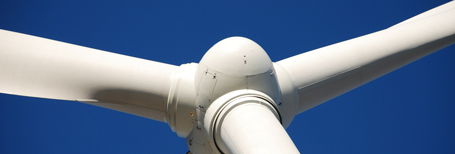
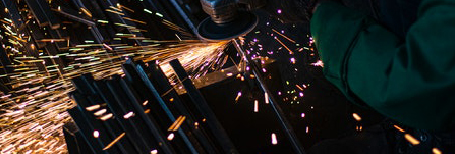
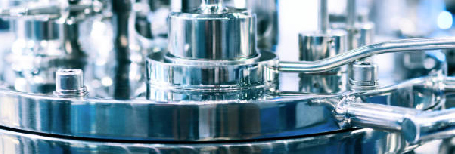
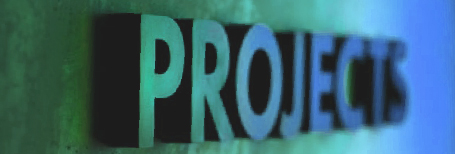


Tel:+86-400 821 5138
Fax:+86-21 3327 5843
Email:noa@noagroup.com